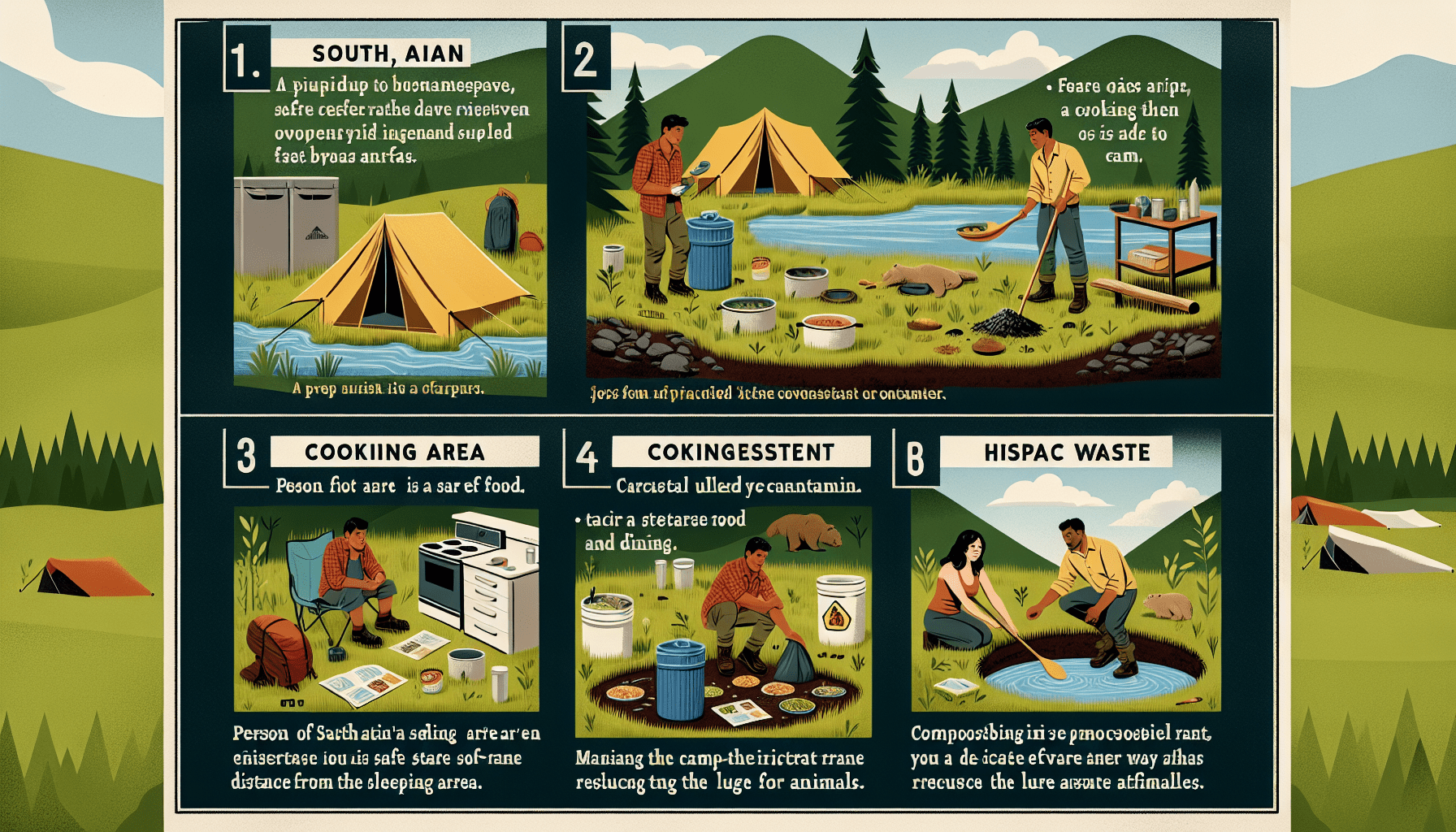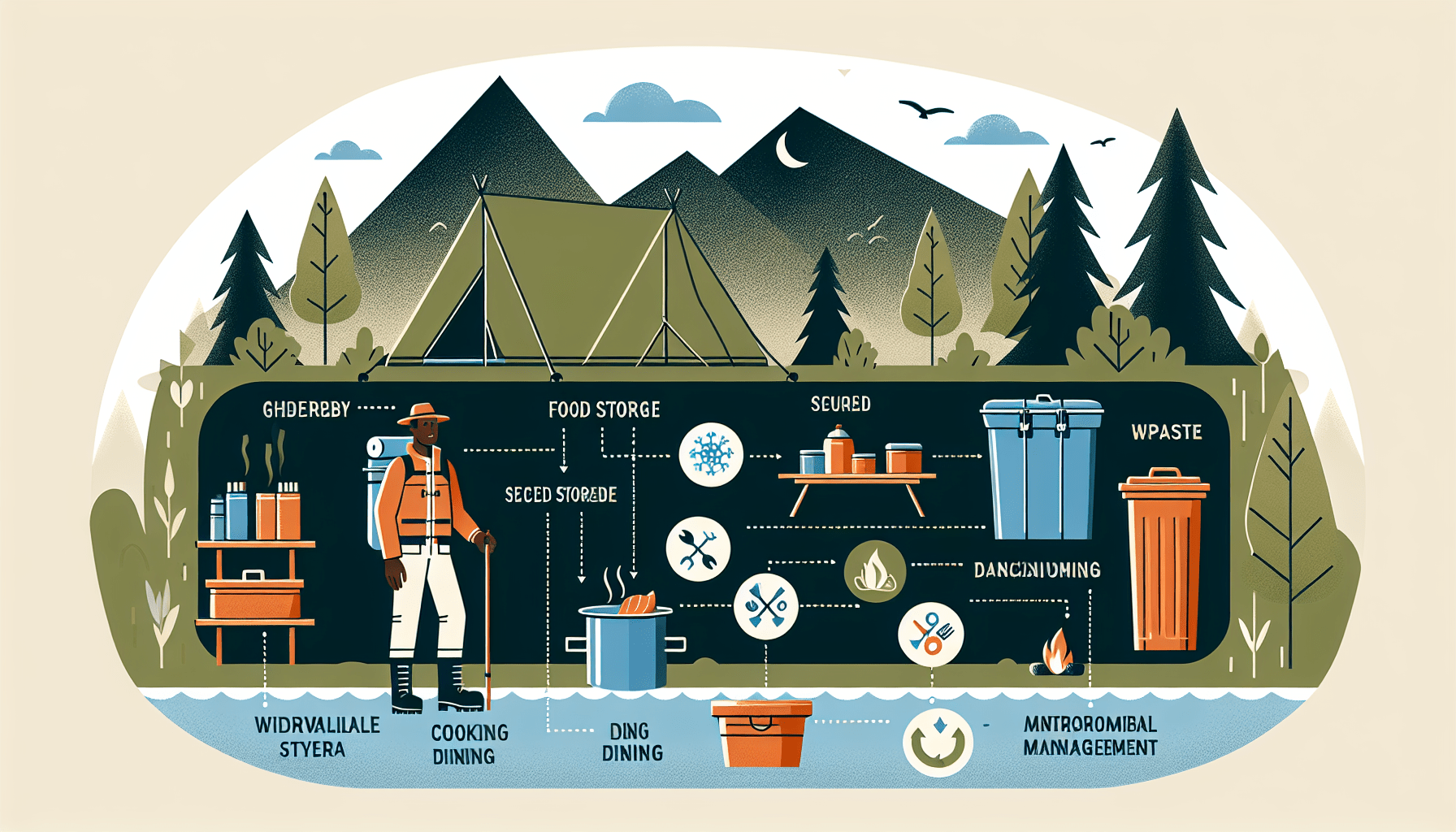Imagine embarking on a thrilling adventure into the untamed wilderness, where the air is crisp and the tranquil sounds of nature surround you. As you immerse yourself in the great outdoors, setting up a safe campsite becomes paramount for a successful and memorable excursion. Fear not, as this article provides you with invaluable tips and techniques to ensure your campsite is a sanctuary from the wild, offering comfort and protection while you revel in nature’s beauty. From choosing the right location to setting up your tent and managing potential hazards, this guide has got you covered. So, grab your gear, and let’s embark on an unforgettable journey to create a safe haven amidst the wilderness.
Choosing the Right Campsite
Finding the perfect campsite is crucial for a safe and enjoyable camping experience. When choosing a campsite, there are several factors to consider. First and foremost, you should consider the terrain of the area. Look for a location that offers level ground to ensure a comfortable sleeping and cooking area.
Additionally, it is important to check for any natural hazards in the surrounding environment. Look out for potential dangers like large dead trees or unstable rocks that could pose a risk to your safety. Avoid areas with steep slopes or loose gravel that may be prone to landslides.
Privacy and proximity are also key factors when selecting a campsite. Consider how close you want to be to other campers and amenities, balancing your desire for solitude with the convenience of nearby facilities. Choosing a secluded spot can provide a more peaceful experience, while being close to others can offer a sense of security.
Finally, it is important to avoid areas with signs of animal activity. Look for fresh tracks, droppings, or signs of digging, as these indicate the presence of wildlife. While encountering animals can be an exciting experience, it is best to keep a safe distance to prevent any conflicts or disturbances.
Setting Up Your Sleeping Area
A good night’s sleep is essential for a successful camping trip, so setting up a comfortable sleeping area is crucial. Before setting up your sleeping arrangements, it is important to clear the ground of any rocks, roots, or debris that may cause discomfort or damage to your equipment. Take the time to thoroughly inspect the area and remove any potential hazards.
Once the ground is clear, it is time to set up your sleeping pads or mats. These provide insulation and cushioning, ensuring a more comfortable night’s sleep. Choose pads or mats that are lightweight, durable, and suited to the terrain you will be camping on.
Next, select a sleeping bag with an appropriate temperature rating for the climate you will be camping in. It is important to have a sleeping bag that will keep you warm during chilly nights or in colder regions, while also being breathable in warmer conditions. Consider the season and location when choosing a sleeping bag.
Finally, set up a tent or shelter to protect yourself from the elements. Look for a suitable location that offers level ground and good drainage to avoid water pooling inside your shelter. Ensure that your tent is properly staked down and secured, and consider adding a rainfly for extra protection from rain or condensation.

Building a Safe Campfire
A campfire can provide warmth, light, and a cozy ambiance to any camping trip. However, it is important to build and manage your campfire safely to prevent accidents and minimize the impact on the environment.
When choosing a location for your campfire, look for an area that is clear of any overhanging branches, dry grass, or other flammable materials. Avoid setting up your campfire near tents, shelters, or any other structures that could easily catch fire.
Before starting your fire, clear the area around the fire pit of any debris or vegetation. This will create a safe buffer zone and reduce the risk of fire spreading beyond your control.
To contain your campfire, use rocks or a fire ring to create a designated area. This will help prevent the fire from spreading and provide a safe boundary for the flames.
Always keep essential fire safety tools, such as a bucket of water or a fire extinguisher, nearby. These can be used to quickly and efficiently extinguish the fire if needed. It is important to never leave a fire unattended and to ensure it is completely extinguished before leaving the campsite or going to sleep.
Proper Food Storage
Proper food storage is not only essential for preventing animals from raiding your campsite, but also for maintaining a clean and organized camping environment. Animals can be attracted to the smell of food and may become a nuisance or even pose a threat to your safety.
To secure your food from animals, it is important to keep it in a secure container. Hanging your food in a bear bag or using a bear-resistant container is the most effective way to prevent animals from accessing your food. These containers are designed to be rugged and resistant to animal tampering.
In addition to securing your food, it is important to keep it away from sleeping areas. The smell of food can attract animals while you are sleeping, which can be dangerous. Store your food at least 100 yards away from your sleeping area to minimize the risk of unwanted animal encounters.
When it comes to disposing of food waste, it is important to do so properly. This means packing out any leftover food scraps or packaging and disposing of them in designated trash receptacles. Leaving food waste behind can attract animals and disrupt the natural ecosystem of the area.

Maintaining Personal Safety
Personal safety should always be a top priority when camping in the wilderness. By taking a few precautions and being prepared, you can minimize the risks and enjoy a safe outdoor experience.
Before heading out on your camping trip, make sure you have essential safety equipment on hand. This includes a first aid kit, a whistle for signaling for help, a flashlight or headlamp, and a multi-tool or knife for basic repairs and tasks.
Being prepared for medical emergencies is also vital. Take the time to familiarize yourself with basic first aid procedures and carry any necessary medication or medical supplies. It is also important to know the location of the nearest medical facilities in case of emergencies.
Insects and ticks are common in outdoor environments, so it is important to protect yourself from bites and diseases they may carry. Use insect repellent to keep bugs at bay, wear long-sleeved shirts and pants to minimize exposed skin, and thoroughly check for ticks after spending time in wooded or grassy areas.
While enjoying the great outdoors, it is also essential to be aware of poisonous plants and wildlife that may be present in the area. Familiarize yourself with local flora and fauna, and learn how to identify any potential hazards. Avoid touching or ingesting unknown plants, and keep a safe distance from wildlife to prevent any unwanted encounters.
Lastly, staying hydrated and taking regular breaks is crucial for your overall well-being and safety. Bring plenty of clean water or a filtration system to ensure you have access to safe drinking water, and remember to take breaks and rest when needed. Pushing yourself too hard can lead to exhaustion or dehydration, which can be dangerous in a wilderness setting.
Staying Prepared for Inclement Weather
Weather conditions can change quickly when camping in the wilderness, so it is important to stay prepared for inclement weather. By taking a few precautions and being prepared, you can minimize the impact of adverse weather conditions on your camping experience.
Before heading out, check the weather conditions for the area you will be camping in. This will allow you to pack appropriate clothing and gear, as well as make any necessary adjustments to your plans.
To prepare for rain or snow, set up a rainfly or tarp over your tent or shelter. This will provide an extra layer of protection from the elements and help keep you dry. Make sure the rainfly is properly secured and that it extends beyond the edges of your tent to prevent water from seeping in.
In windy conditions, it is important to secure your gear to prevent it from blowing away. Use stakes or weights to anchor your tent and any other equipment, and consider using windbreaks or natural barriers to shield your campsite.
Dressing appropriately for the weather is crucial for your comfort and safety. Layer clothing to adjust to changing temperatures, and choose materials that wick away moisture to keep you dry. Always bring a waterproof jacket or poncho to protect yourself from rain or snow.
In the event of thunderstorms or lightning, it is important to take immediate action to ensure your safety. Seek shelter in a sturdy building or enclosed vehicle, avoiding open spaces, tall trees, or bodies of water. If there is no shelter available, find a low-lying area away from trees and metal objects, crouch down on the balls of your feet, and minimize contact with the ground.

Sanitation and Waste Disposal
Maintaining proper sanitation and waste disposal practices is not only important for your comfort, but also for the preservation of the natural environment. By following these guidelines, you can minimize your impact and leave a clean and pristine campsite.
Pack out your trash, leaving no trace behind. Bring garbage bags and designate a specific bag for trash. Collect and store your trash throughout your camping trip, ensuring it is securely sealed and properly disposed of once you return to civilization.
When nature calls, dig a proper cat hole for human waste. Choose a location at least 200 feet away from water sources, trails, and campsites. Use a small trowel or shovel to dig a hole that is 6 to 8 inches deep and wide enough to comfortably accommodate waste. After use, cover the hole with soil and disguise it to blend with the natural surroundings.
If washing dishes or utensils during your camping trip, use biodegradable soap to minimize the impact on the environment. Avoid using regular dish soap, as it can have harmful effects on plants and wildlife. Dispose of the wastewater at least 200 feet away from water sources to prevent contamination.
Lastly, keeping your campsite clean and organized is essential for both safety and environmental reasons. Put away all food, trash, and personal items when not in use to avoid attracting animals, and be sure to leave the natural surroundings as you found them, or even better.
Respecting Wildlife and Nature
When camping in the wilderness, it is important to respect the wildlife and natural environment around you. By following a few simple guidelines, you can minimize your impact and ensure the well-being of the ecosystem.
Observe animals from a distance and avoid approaching or feeding them. Feeding wildlife can disrupt their natural behaviors and may cause them to become dependent on human food, which can lead to aggression or dangerous situations.
Properly dispose of human waste by following the cat hole guidelines mentioned earlier. This ensures that waste is properly buried and minimizes the risk of contamination or attracting wildlife.
Leave no trace – pack out what you pack in. This means taking all your belongings and trash with you when you leave, leaving the campsite in the same condition as you found it. This includes removing any litter, debris, or evidence of your presence.
Be mindful of noise levels to avoid disturbing both wildlife and fellow campers. Keep voices low, avoid playing loud music, and minimize unnecessary noise. Respect the tranquility of the natural surroundings and be considerate of others who may be seeking the same serenity.

Navigating in the Wilderness
When venturing into the wilderness, it is important to have the necessary tools and skills to navigate safely. By following these guidelines, you can minimize the risk of getting lost and ensure a more enjoyable and stress-free camping experience.
Bring a map and compass to help you navigate your surroundings. Familiarize yourself with the area before your trip and mark key landmarks or points of interest on your map. This will help you stay oriented and find your way back to camp if needed.
Learn basic navigation skills such as reading a topographic map, using a compass, and understanding key geographical features. These skills will allow you to navigate through unfamiliar terrain and make informed decisions about your route.
Mark your campsite and surroundings to help you find your way back easily. Use brightly colored tape or markers to identify the trail leading to your campsite, and take note of any distinctive features or landmarks that will help you locate your camp.
Before exploring the wilderness, plan your routes and inform others about your plans. Share your itinerary with a trusted friend or family member and establish set check-in times to ensure your safety. Leave detailed notes about your campsite and route, including any alternate plans or emergency contact information.
Informing Others About Your Plans
Informing others about your camping plans is a crucial safety measure that should not be overlooked. By sharing your itinerary with someone trustworthy, establishing set check-in times, and leaving detailed notes, you can ensure that help will be accessible if needed.
Before embarking on your camping trip, share your itinerary with a trusted friend or family member. Provide them with details about your planned route, your expected return date, and any contact information for the park or campground authorities.
Establish set check-in times with your designated contact person. Agree on specific times when you will check in with them, either through phone calls, text messages, or other means of communication. This will allow them to verify your well-being and take action if you fail to check in as scheduled.
Leave detailed notes about your campsite and route. Include information about the exact location of your campsite, any landmarks or notable features nearby, and any alternate plans you may have made. Be sure to include emergency contact information and instructions on what actions to take in case of an emergency.
By taking these simple steps, you can ensure that someone knows your whereabouts and can alert authorities if necessary. This added layer of communication and accountability can provide peace of mind and enhance your safety while camping in the wilderness.

